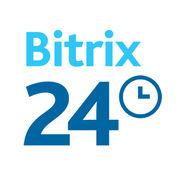Salesforce is a cutting-edge Customer Relationship Management software that brings companies and their customers together. The integrated software helps departments like commerce, ... View Profile
Best Team Collaboration Software
The best team collaboration software In USA facilitates seamless communication and collaboration among team members regardless of their location. It offers features like messaging, file sharing, task management, and video conferencing, enabling teams to work efficiently, share ideas, and coordinate tasks in real-time, ultimately enhancing productivity and fostering a cohesive work environment.




Personal Advisor
List Of 20 Best Team Collaboration Software | Get Free Demo
Personalize your search

Docsie is a product documentation software that helps users create better documents, retain customers, and simplify the way the team works on doc files. With Docsie, users can easi... View Profile
Miro is a smart platform that enables team collaboration and efficient workflows to achieve the best results. The tool helps run productive and engaging online meetings and worksho... View Profile
RealityMax is an advanced 3D design collaboration platform that provides users with an unparalleled level of functionality and flexibility. With its comprehensive suite of tools an... View Profile
Slack is a communications and workflow solution designed for teams. Using Slack, you can set up channels, which can be around any theme, project, client or department. You can invi... View Profile
Wimi is a cloud-based collaboration software that can be run on Mac, Android, iOS, Windows, etc. The software helps with project management, task management, document management, c... View Profile
The search function also includes a "smart search" that looks through all of your team's content to find what you're looking for. 500apps' Teams.cc is a collaboration tool that ... View Profile
Asana is a tool that helps you manage your work and collaborate with your team more effectively. With Asana, you can organize your work into boards, portfolios, and custom fields, ... View Profile
Confluence is a powerful platform that can be used to manage online projects related to any kind of functional departments, including marketing, finance, legal, and human resources... View Profile
Project management software helps you plan projects, assign tasks, keep track of progress, manage documents, communicate with your team, and get work done on time. You can navigate... View Profile
Backlog is an online project management software that also provides different task management solutions to teams. The software enables project management, code management, and bug ... View Profile
Check How Suppeco can help to automate Indian Business. Techimply provide their list of features, pricing, Free demo and Comparison with the best alternative View Profile
Bitrix24 is a cloud-based collaboration tool that can be used to boost team performance and encourage effortless communication. It comes with a diverse set of features that can be ... View Profile
Check How Kantata can help to automate Indian Business. Techimply provide their list of features, pricing, Free demo and Comparison with the best alternative View Profile















